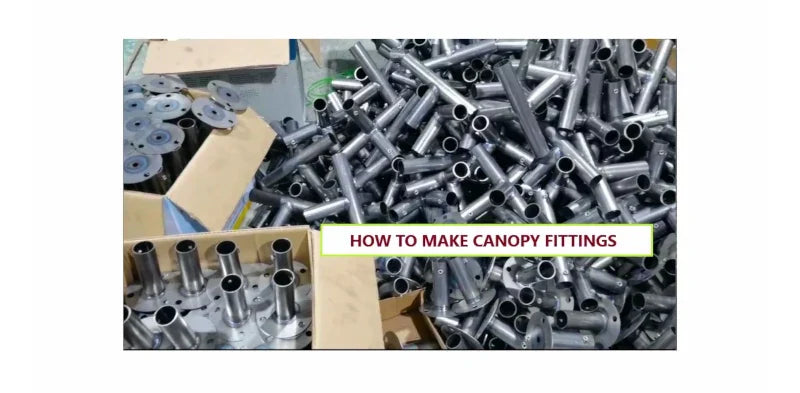
How To Make Canopy Fittings
How To Make Canopy Fittings - A Process Breakdown
The Welding Process
Making canopy fittings can be daunting! The process can be easily completed by breaking it down into steps. The very first step is to make a mold for cutting and the pipes then another often referred to as a “jig” for holding the cut sections in place for welding. We take these precautionary steps to ensure precision and consistency in outcomes.
When it gets to the welding stage, which involves joining two or more pieces of metal together using heat and pressure; there are various ways to weld the pipe joints, but the most common is using an oxy-acetylene torch. This method is effective for small diameter pipes, but for larger pipes, an arc welder is often used.
Before welding, the pipes must be cleaned of all dirt, grease, and other debris. This can be done with a wire brush or a regular sandpaper. Once the pipes are clean, they are placed in a jig to keep them aligned and in place while welding.
The welder then starts the torch and ignites the acetylene. The welder then adjusts the gas flow and flame size to get the correct welding heat. When the torch is in the correct position, the welder begins welding the joint by moving the torch in a circular motion.
After the welding is complete, the welder inspects the joint to ensure there are no leaks. If there are any leaks, the welder can go back and weld over the area again. Once the joint is inspected and approved, the pipes are cooled, and the joint is complete.
Welding pipe joints is a skill that takes practice to master [2]. However, with some practice, anyone can learn how to weld pipe joints safely and effectively.
When welding steel joints, it is important to wear personal protective gear to protect yourself from the sparks and heat. This includes a welding mask, gloves, and a heavy apron.
Hand weld Vs. Machine weld
Handmade welding is generally better than machine welded joints because it is more precise and the welds are stronger.
Welding Manually by Hand
Rust Prevention
Rust prevention is applied after welding is completed. There are many methods to this but the best of them all is Galvanization; which simply put, is the coating of a metal with a layer of another metal to protect it from corrosion. The most common metals used for galvanization are zinc and aluminum. When these metals are used in combination, they are called galvanized steel.
The process of galvanization [1] can be used on any metal, but it is most commonly used on iron and steel. The zinc coatings prevent rust by providing a physical barrier that oxygen and water cannot penetrate. The zinc is supposed to be sacrificial, meaning that it will corrode before the iron or steel does.
Galvanized steel is often used in environments where corrosion is a concern, such as in outdoor applications or in areas where salt is present. The zinc coatings provide excellent protection against rust, even in these harsh conditions.
The best method of galvanizing is hot-dip galvanizing ( which is the method we use for our handmade fittings), in which the metal is dipped into a vat of molten zinc. This process gives the zinc a rough, spangled [1] surface that provides good protection against corrosion.
Other methods of rust prevention are powder coating, electrolysis, etc. We often use galvanizing or a combination of powder coating and galvanizing.
Removing Excess Molten Zinc Deposits
If there are excess molten zinc deposits on the surface of the galvanized metal, or when the surface is extremely rough; we use a wire brush or a rotor sander to remove the excess zinc deposits. This needs to be done to have an aesthetically appealing finished product that would not injure the end user or the other materials or canopy accessories they would require to set up a tent or greenhouse support structure. Once the excess zinc has been removed, the surface of the metal will be smooth and free of any corrosion-causing materials.
Product Inspection
The last step is to inspect them, and ensure each piece meets acceptable quality standards. After confirming the quality, we then sort and package the items and prepare them for sale to our customers.
Citations:
- "The Hot-Dip Galvanizing Process''. V&S Hot Dip Galvanizing. Archived from the original on 2013-06-23. Retrieved 2012-11-30.
- . “Welding pipe joints as a skill” ; Wiki.
